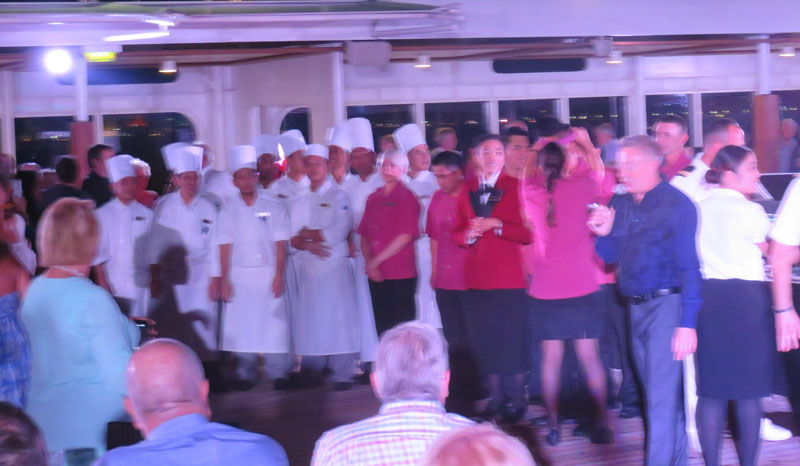
Machu Picchu, Cruise around Cape Horn, and Iguassu Falls
Mike and Judy Henderson
January 31 to March 1, 2017
I'm going to leave the map at the beginning of each page to help you visualize where we are.

++++++++++++++++++++++++++++++++++++++++++++
2/19/2017 (Sunday) An "at sea" day. Not a lot to do except participate in some of the games on board.
We played bocce. Here's Judy making a throw.
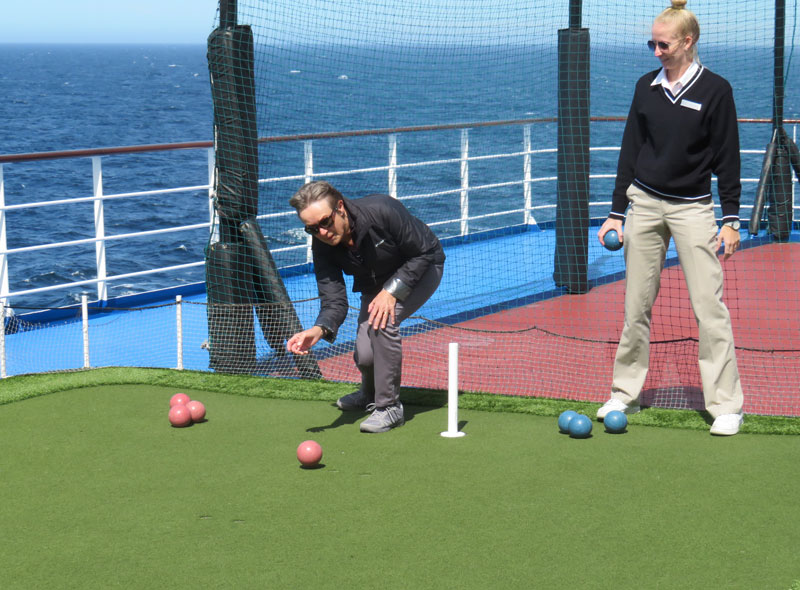
I was lucky and won the game for a total of 4 bonus points.
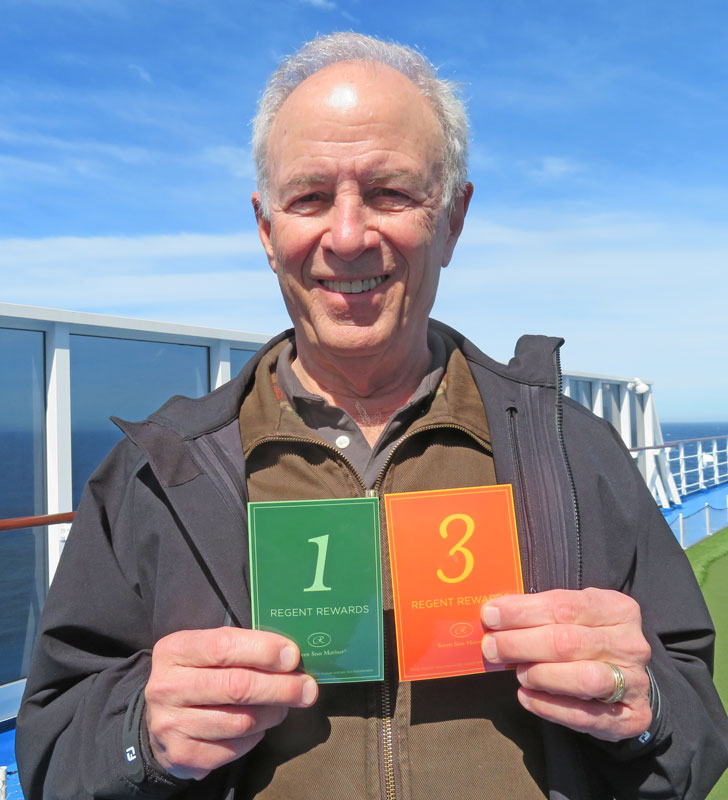
+++++++++++++++++++++++++++++++++++++++++++++++++++++++++++
2/20/2017 (Monday) Today we arrived in Puerto Madryn. It's the consolation prize for missing the Falkland Islands.

The town is at the back of a large bay. They told me the distance from the entrance of the bay to Puerto Madryn was 25 nautical miles.
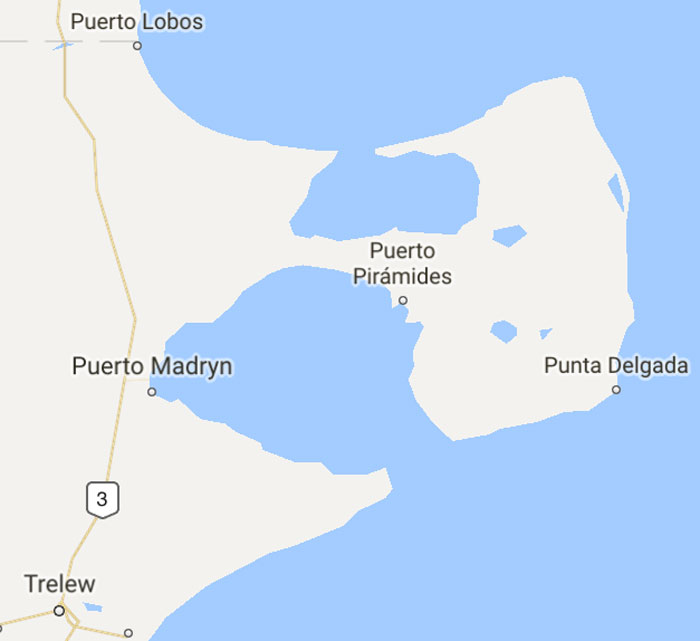
We took a bus tour to the town of Gaiman, which was settled by Welsh people. They still speak Welsh and maintain their Welsh heritage.
The land is fairly dry, similar to western Texas or Arizona.
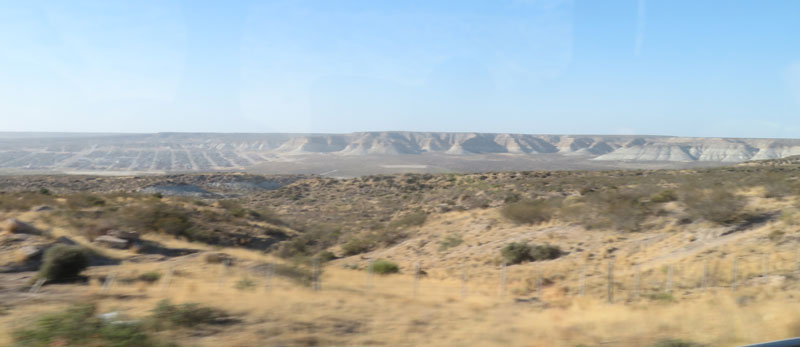
The town of Gaiman is in the valley of the Chubut River, which brings water from the Andes. Most of the water is used for irrigation and the river is somewhat polluted by pesticide runoff, as well as nitrate and phosphorus, from the farms. Here's a shot of the river. It also carries a lot of fine silt - probably clay, from the color.
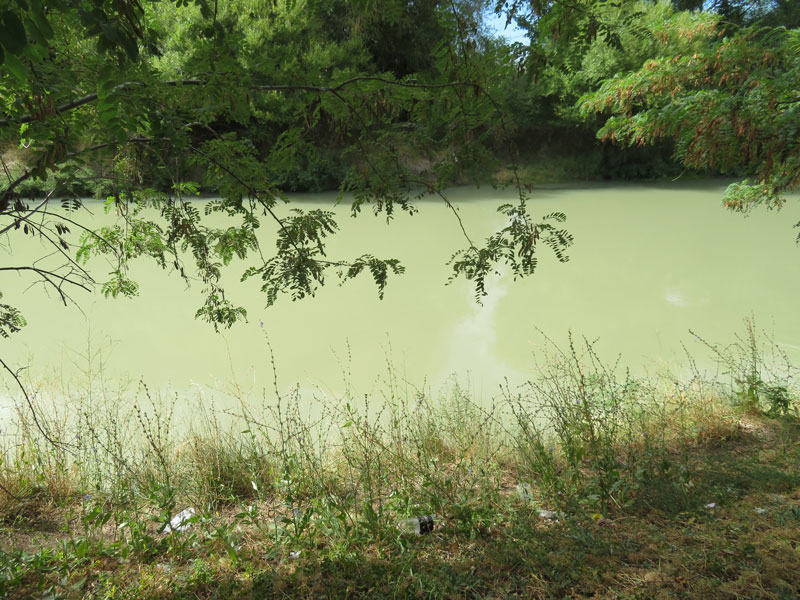
We went to the "oldest house in town". As our guide stressed, not the first house, but the oldest surviving house.
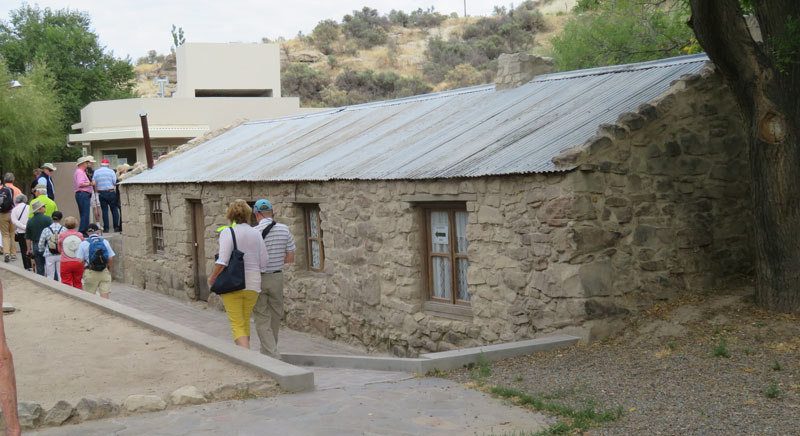
Here's Judy, Jacki, and Elaine in front of the old house.
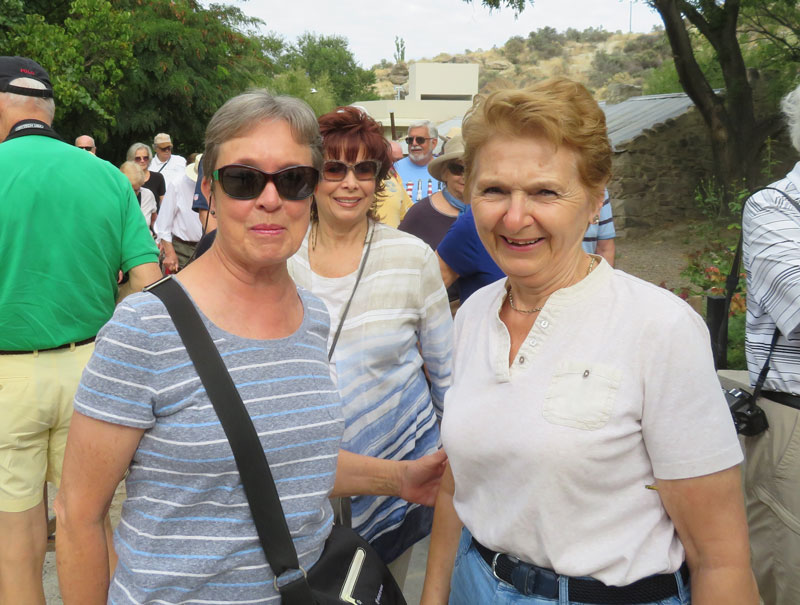
We also saw the outside of the library, a church, and a couple of other buildings. Gaiman is a small town, less than 5,000 people, so they were stretching for things to show us:-)
Then we went to a tea house, quite a big place, and obviously intended for tour groups like ours. We had black Welsh tea and some typical Welsh cakes and treats.
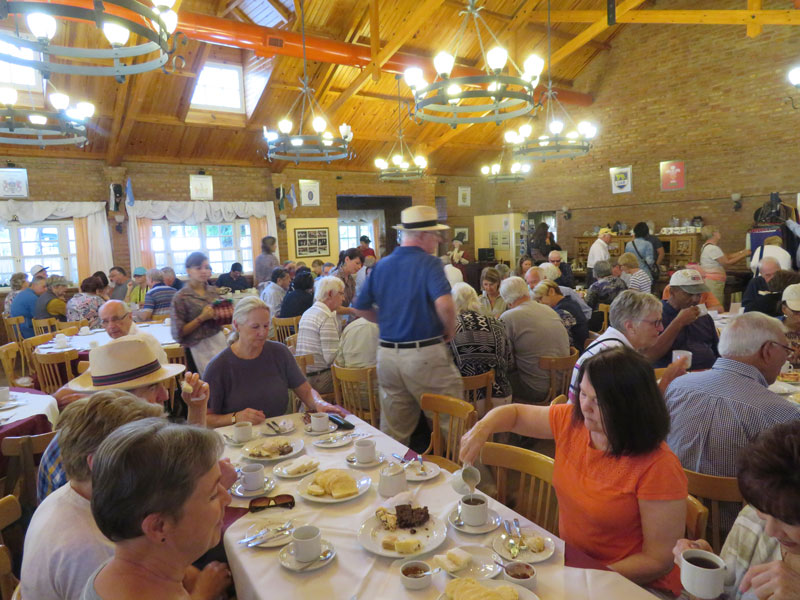
It was quite a spread and more food than we could possibly eat. They brought more after this picture was taken. It was all quite tasty.
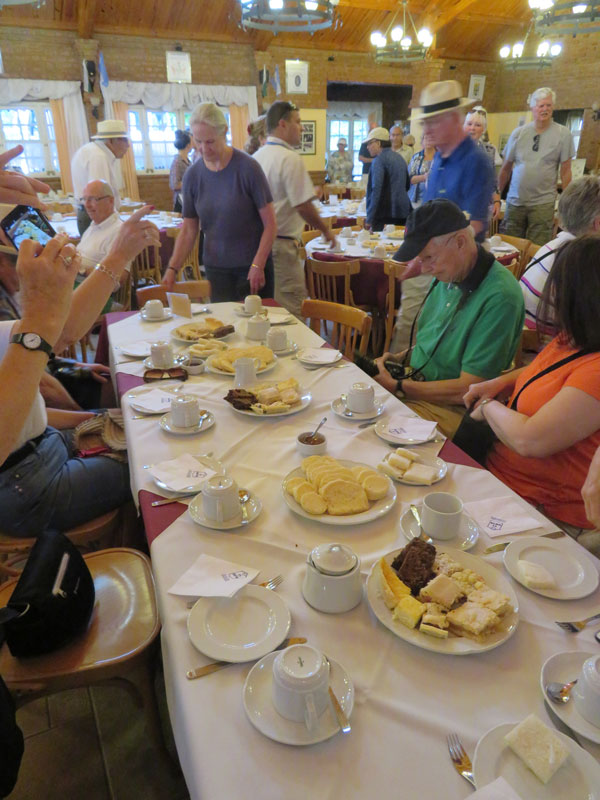
Here are our friends, Jacki and Stan.
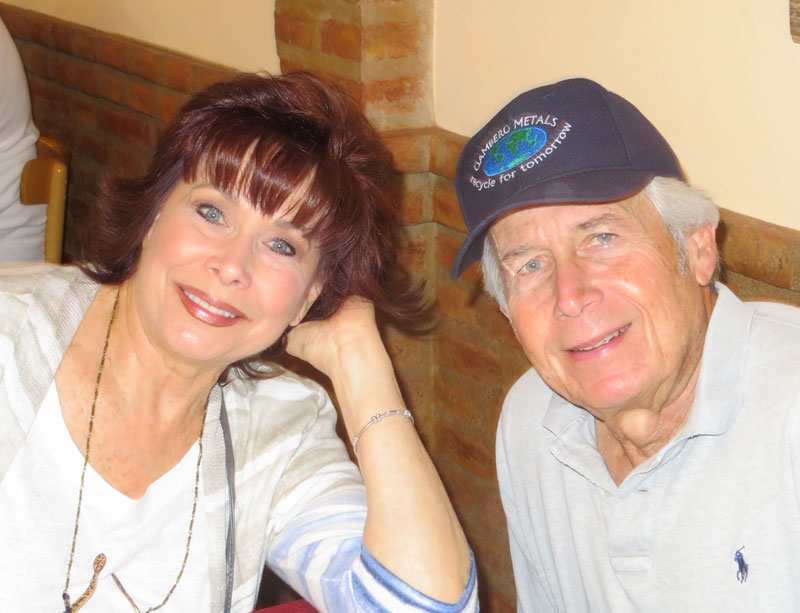
A Welsh choir group sang some songs in Welsh for us. While the songs were in Welsh, we could recognize some of them, such as "Amazing Grace".
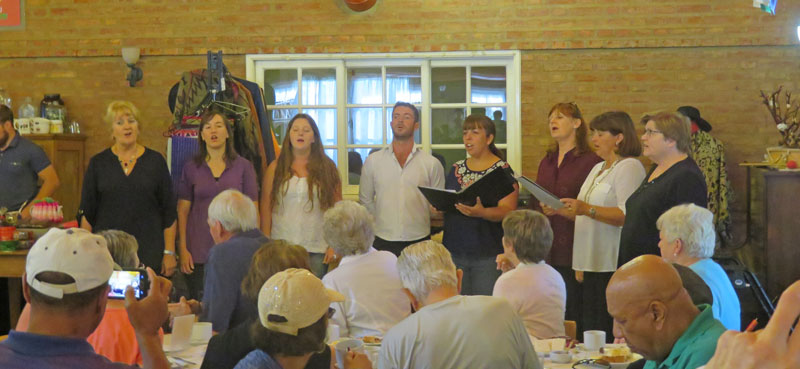
We then boarded the bus for the ride back to Puerto Madryn, where we took a drive along the southern side of the bay. There were some interesting houses (and expensive, according to our guide) facing the bay.
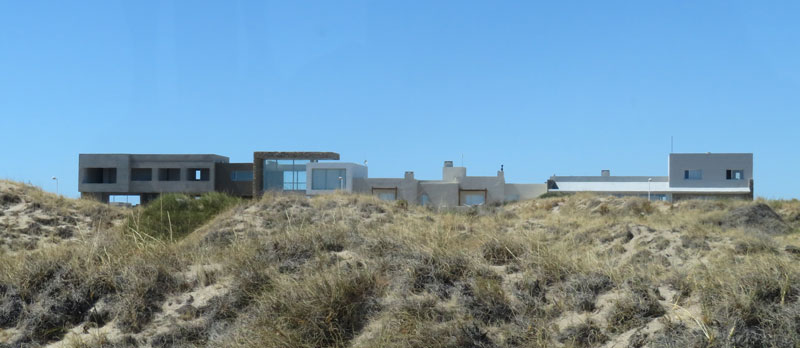

The beach area is beautiful but the guide said the water is cold.
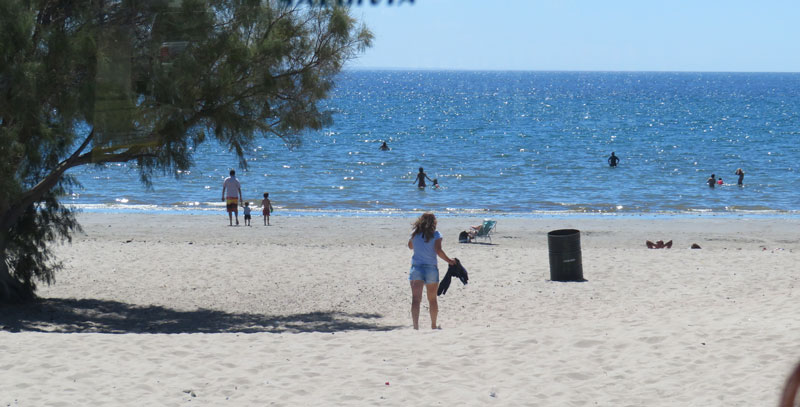
Back at the ship we participated in a team Bocce competition and won first place (3 points - 2 points for 2nd and 1 for participating)
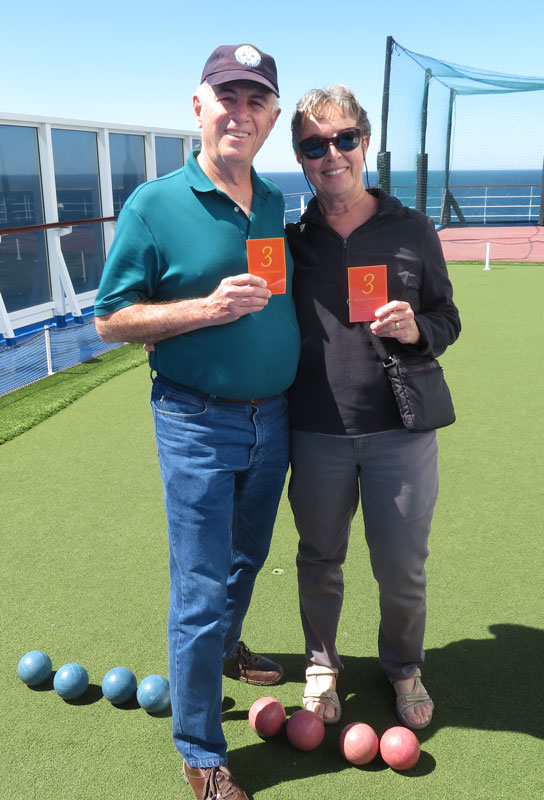
We then did a ring toss game and I won first place. Here I am with the gal who ran the game. She's a dancer on the cruise and has secondary jobs of running some of the games.
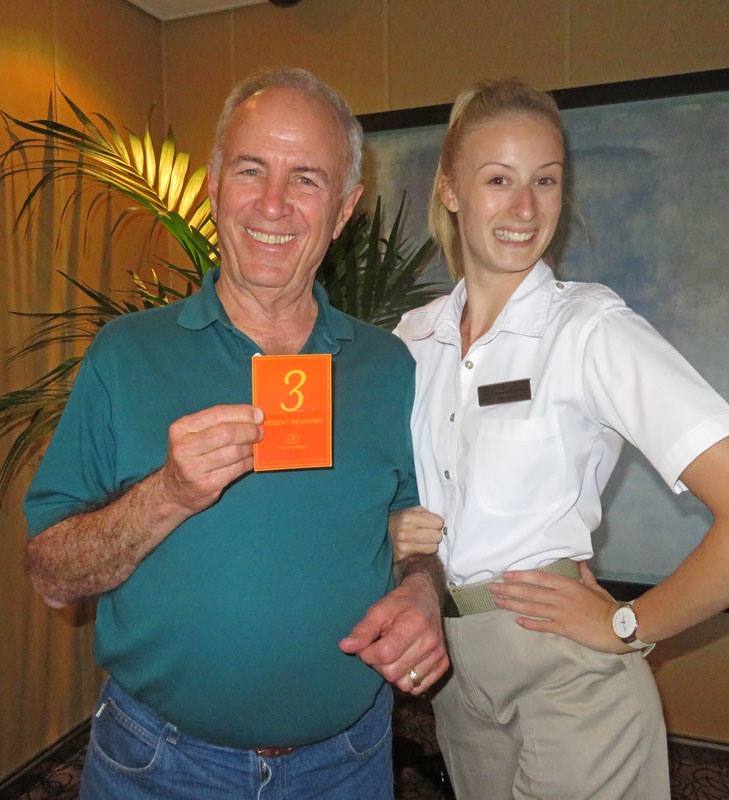
++++++++++++++++++++++++++++++++++++++++++++++++++++++++++++
2/21/2017 (Tuesday) "At sea". We participated is some games today but I'm sure you've seen enough of the game pictures.
Tomorrow we arrive at Punta del Este and have to tender in.
++++++++++++++++++++++++++++++++++++++++++++++++++++++++++
2/22/2017 (Wednesday) We've been sailing north and it's been getting warmer. Today. we arrived at Punta del Este and 80+ degree weather. Summer is here.
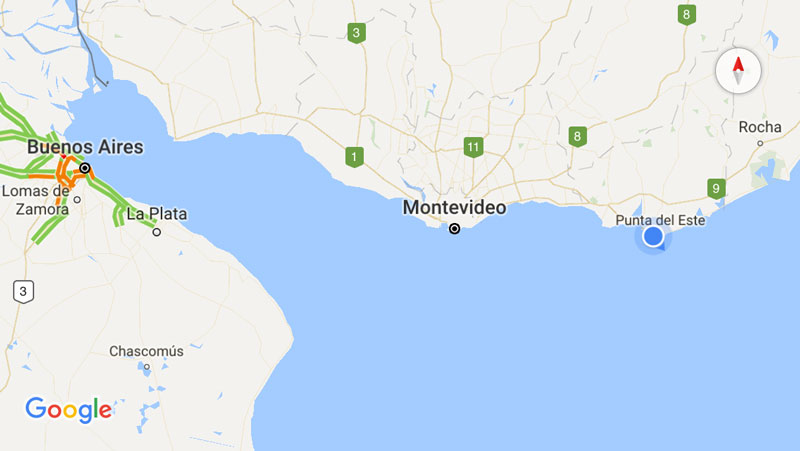
The next couple of days will see us dock in Montevideo and then in Buenos Aires. Here's a closer look at Punta del Este. We're anchored offshore and have to tender in.
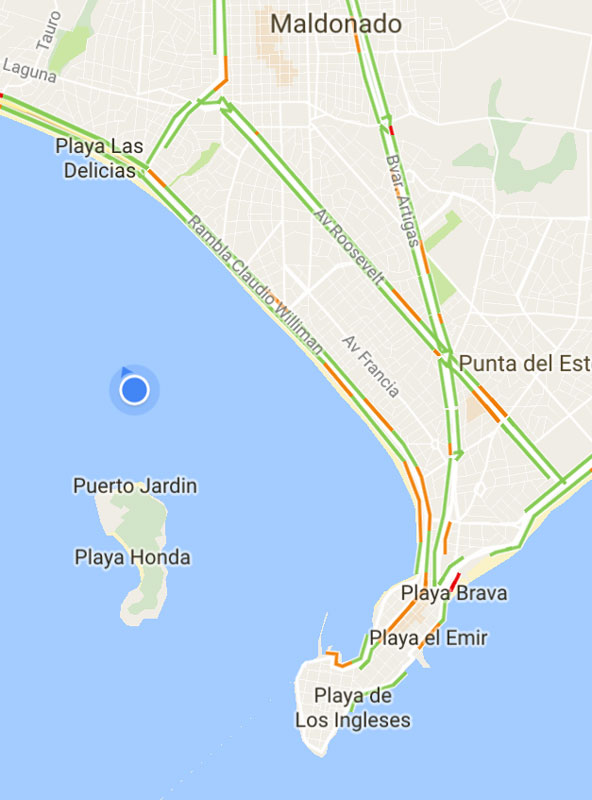
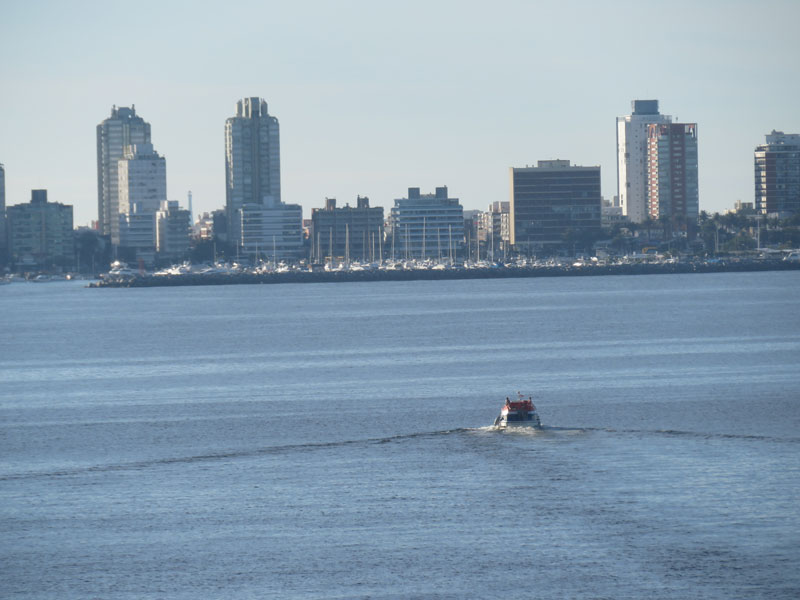
Punta del Este is a very wealthy beach and vacation town. The population in the winter is about 10,000 but it swells to almost a half million in the summer. Many people have summer places here, usually a condo.
We took the "Arts and Culture" tour by bus. One interesting thing in the old town is that the streets have both names and numbers. I'm told that residents often refer to them by number.
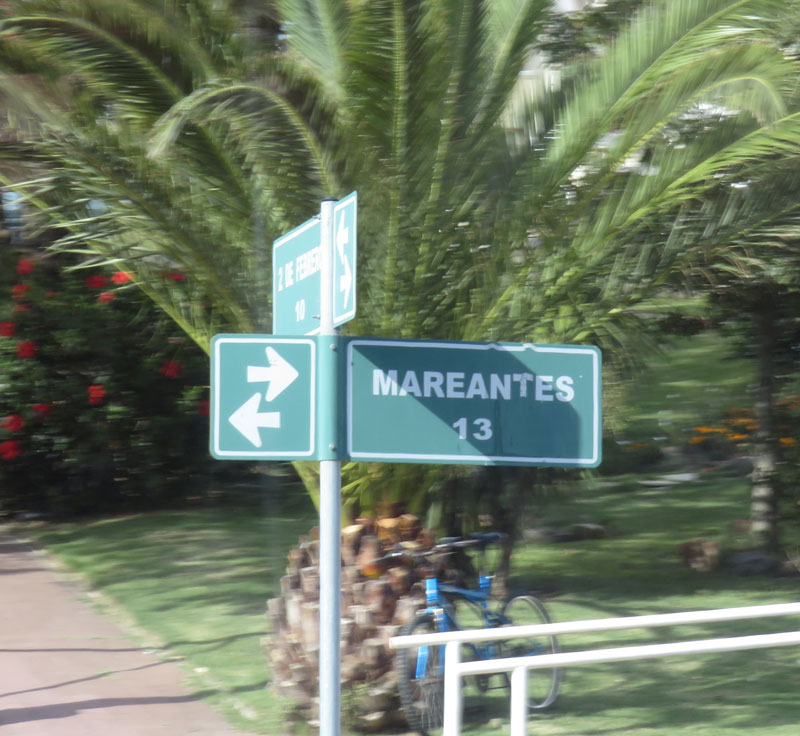
We drove by the old lighthouse that stands at the top of the hill of the point.
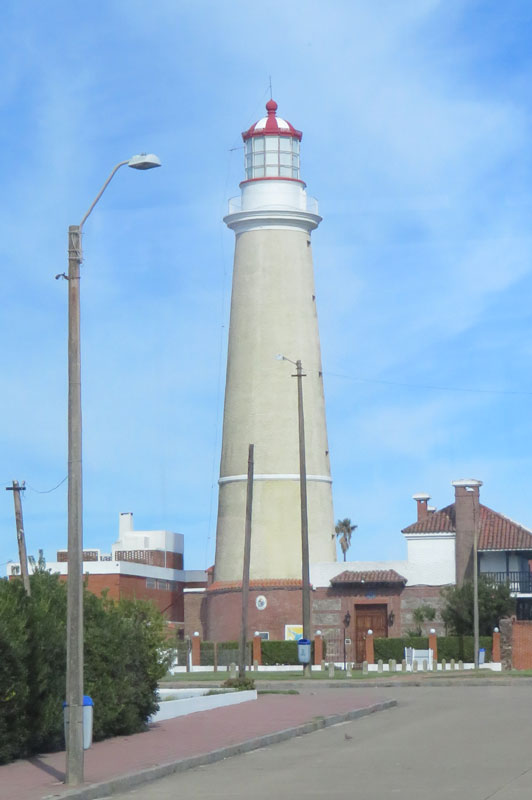
Then we went to a parking lot at the water's edge. Back in 1939, the Battle of the River Plate took place nearby and there was a memorial to that battle there. The German cruiser, the Admiral Graf Spee was damaged in that battle and was later scuttled by her crew. The anchor at the memorial is said to be from the British ship HMS Ajax, which participated in that battle, but that's obviously incorrect. The Ajax would have carried an anchor of a more modern design. The anchor in this memorial is too weathered to date to the time of the breaking up of the Ajax (1949), and Wikipedia, in their article on the Ajax, reports that the anchor of the Ajax is in Canada.
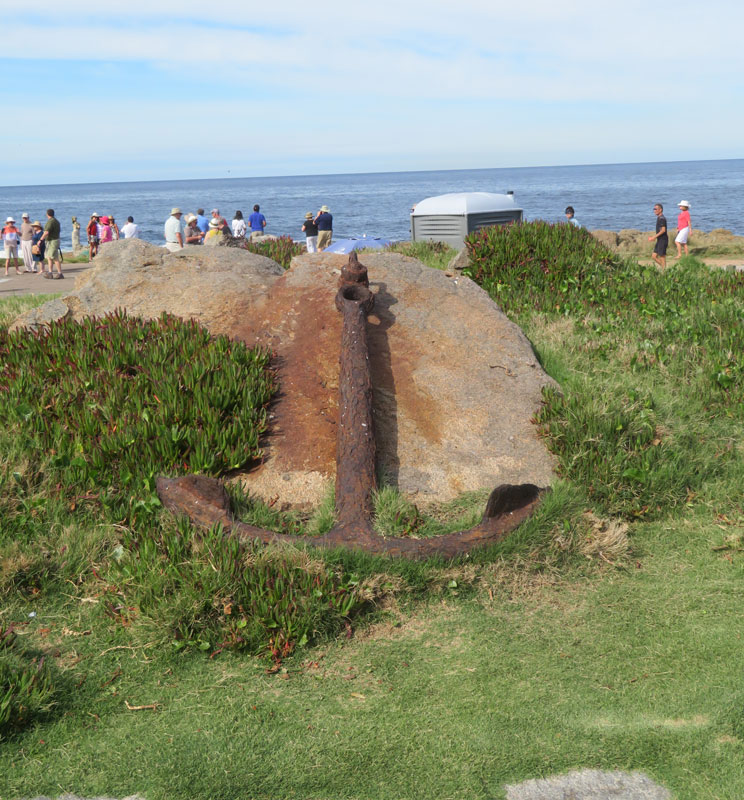
After we left the memorial area, we saw some of the beach area. Beautiful sandy beaches.
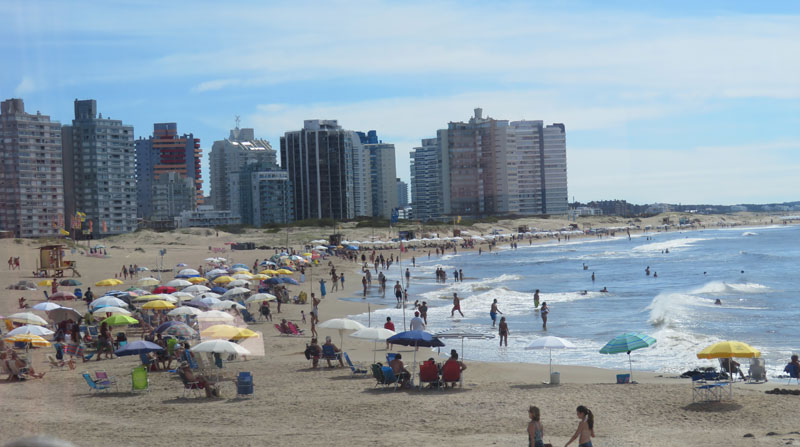
Surfers congregate at this one spot because of the way the waves break.
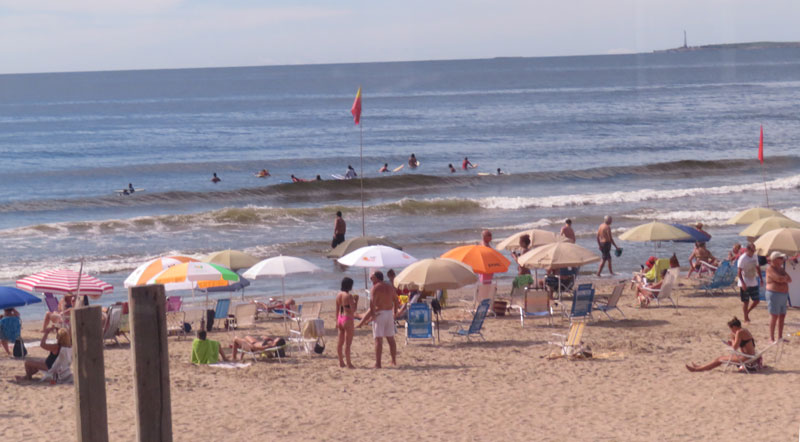
We stopped at the beach where there was a sculpture of a giant hand coming out of the sand, known as La Mano by Chilean artist Mario Irarrazabal. It is supposed to represent the joining of man and nature.
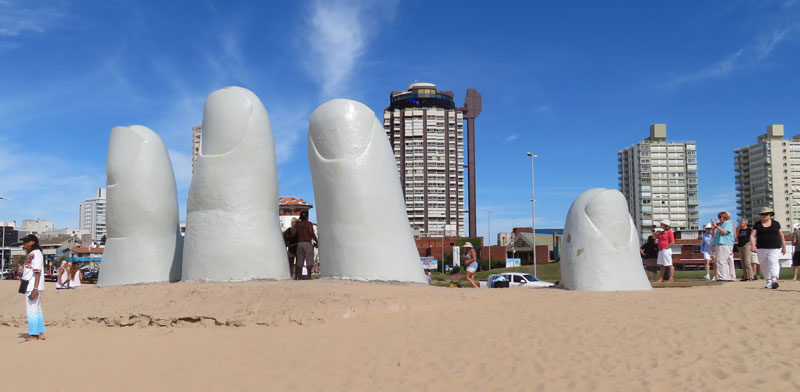
Next, we drove along the waterfront and saw some of the homes facing the ocean.
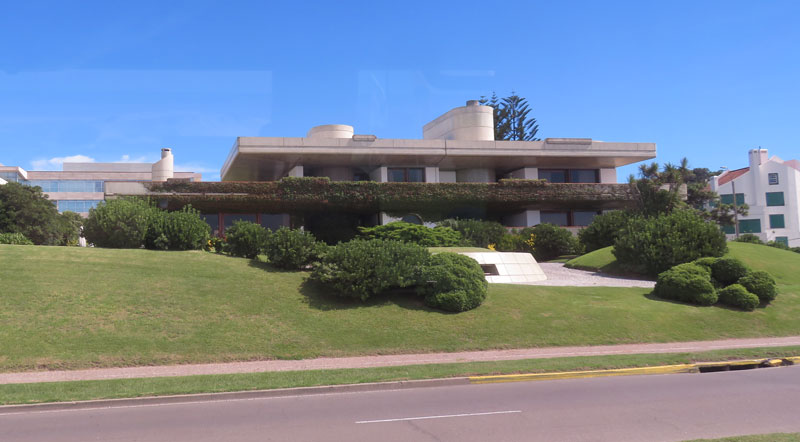
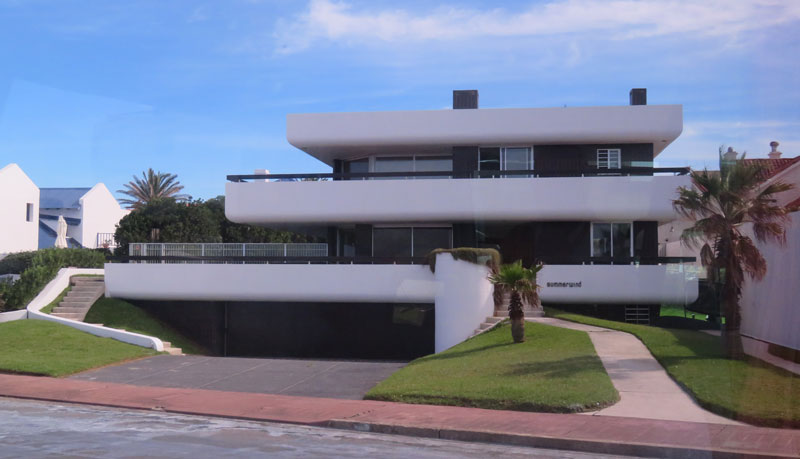
Then we drove to the area known as La Barra and saw the Bridge Leonel Viera (the link is in Spanish), built in 1965. This is an interesting design, known as a Stressed Ribbon Bridge, because it's basically a suspension bridge where the bridge is along the suspension wires, rather than being hung below the wires, as in a traditional suspension bridge. The concrete deck sections are installed and the suspension wires are tensioned so that the bridge is a pre-tensioned structure.
While the design is ingenious, the disadvantages are obvious. Driving over the bridge at any speed is like riding a roller coaster. And the dip in the center does not leave much room for boats to pass underneath.
For those who find this interesting, you can see a list of stressed ribbon bridges in this link. Many are pedestrian bridges.

Next, we went to the Ralli Museum, a museum of contemporary and impressionist art. There are five Ralli Museums in the world: Punta del Este (Uruguay), Marbella (Spain), Santiago (Chile), and two in Caesarea (Israel).
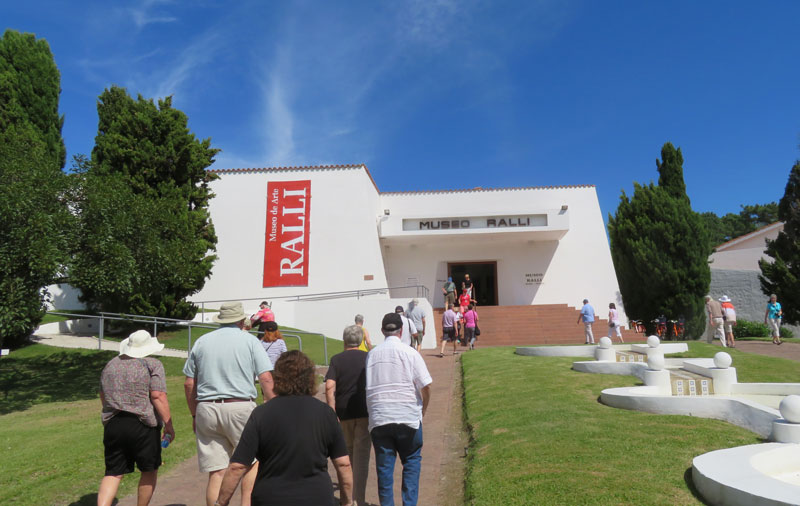
I didn't take any pictures of the paintings but did take a few of the sculptures.
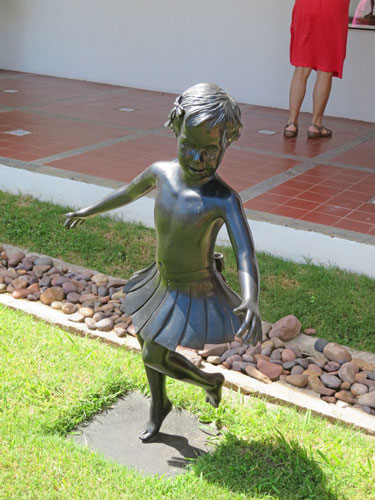
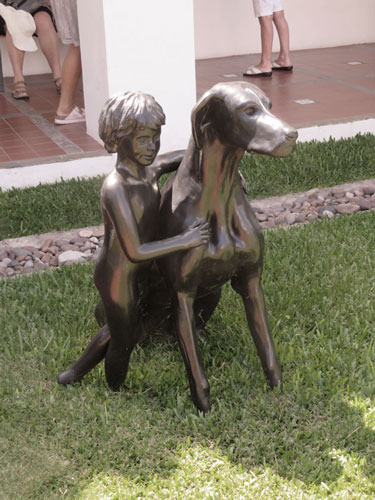
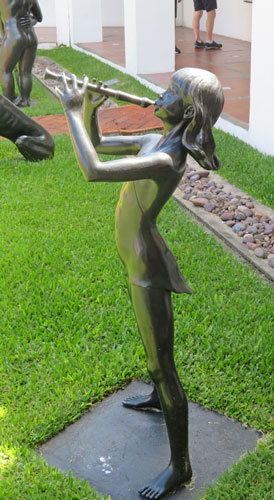
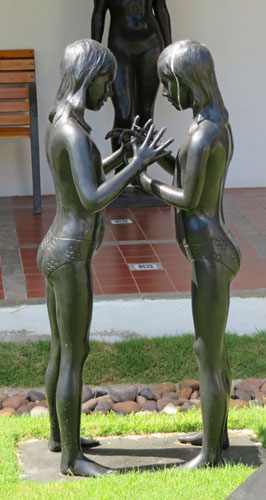
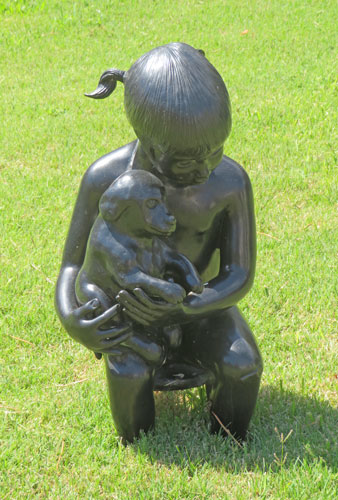
This next one is known as "Gossip"
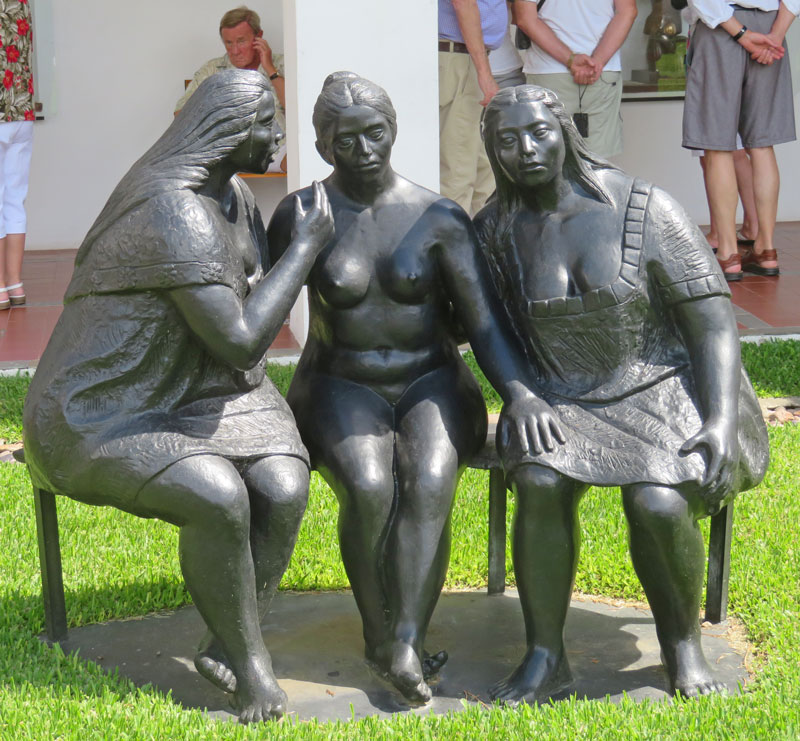
When we left the Ralli Museum, we went to the home of Carlos Paez Vilaro, called Museo-Taller de Casapueblo.

Some pictures from the museum.
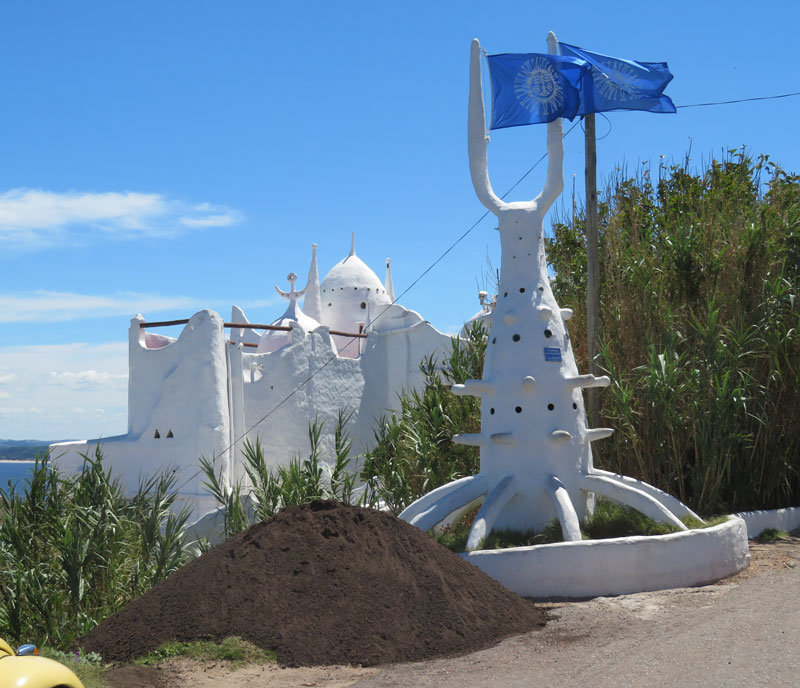
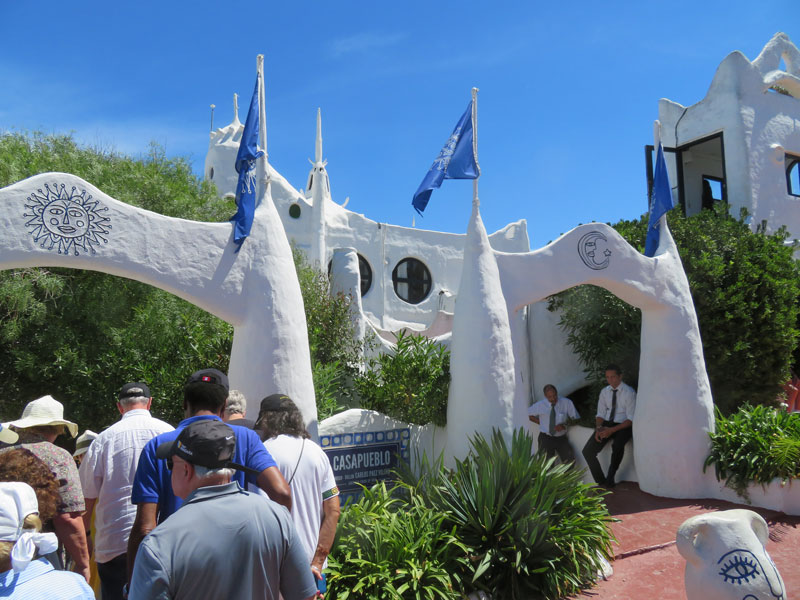
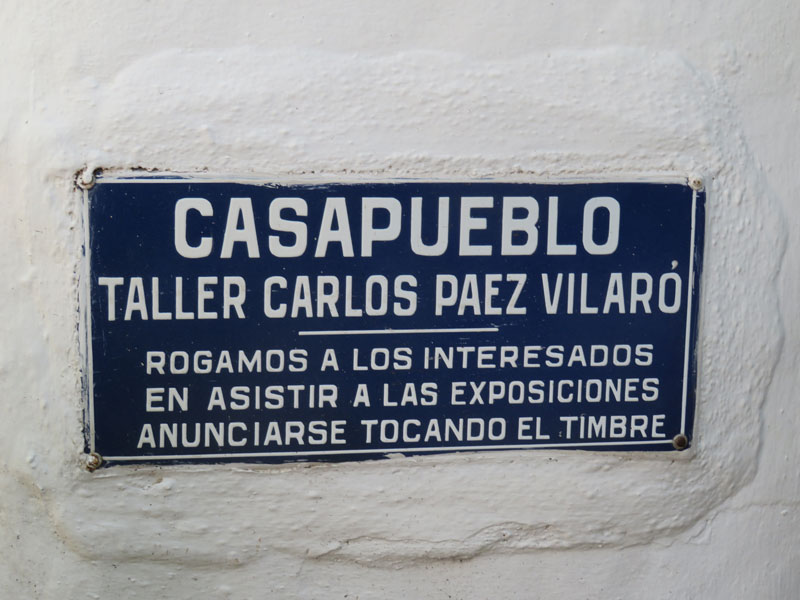
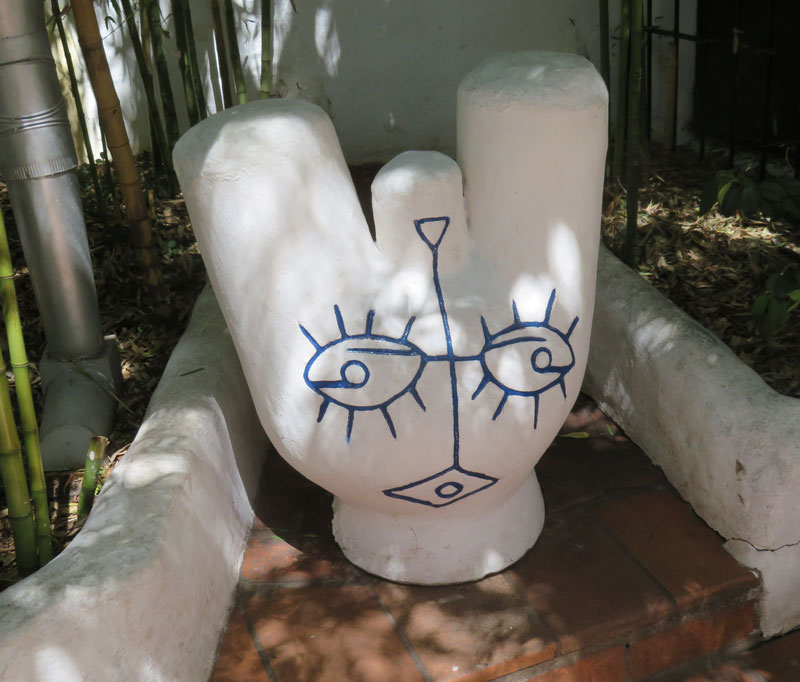
They gave us a glass of champagne for us to sip as we "communed with nature" while sitting and enjoying a view of the ocean. Part of the house has been converted into a hotel.
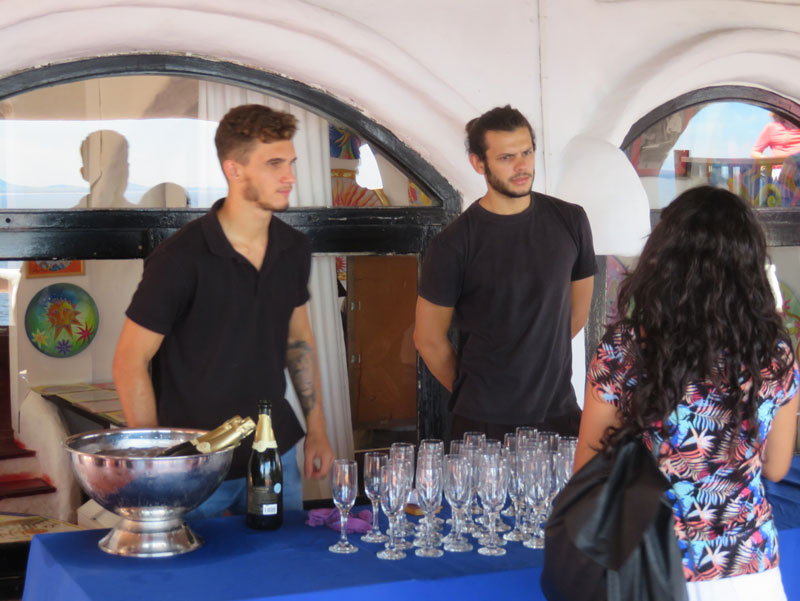
Overall, there wasn't much to see there and we left soon to board the tender.
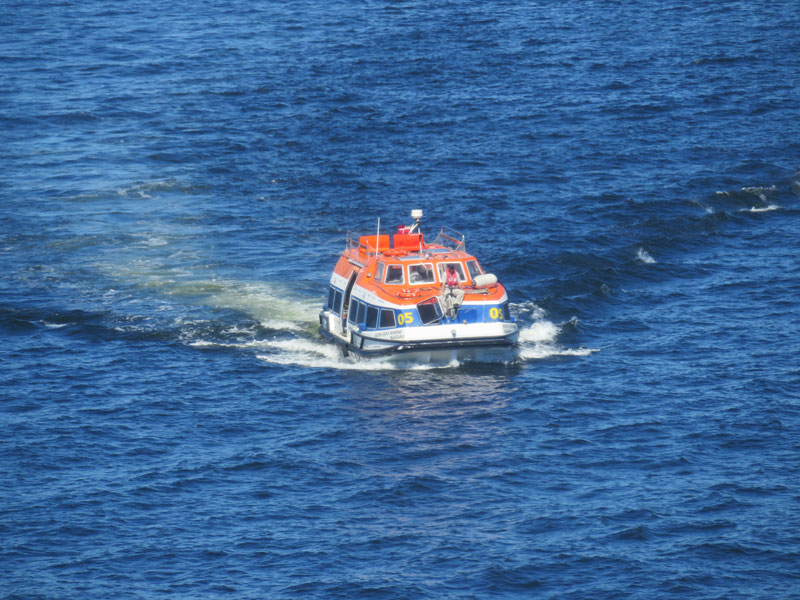
The ship was preparing the pool deck for a barbecue that evening.
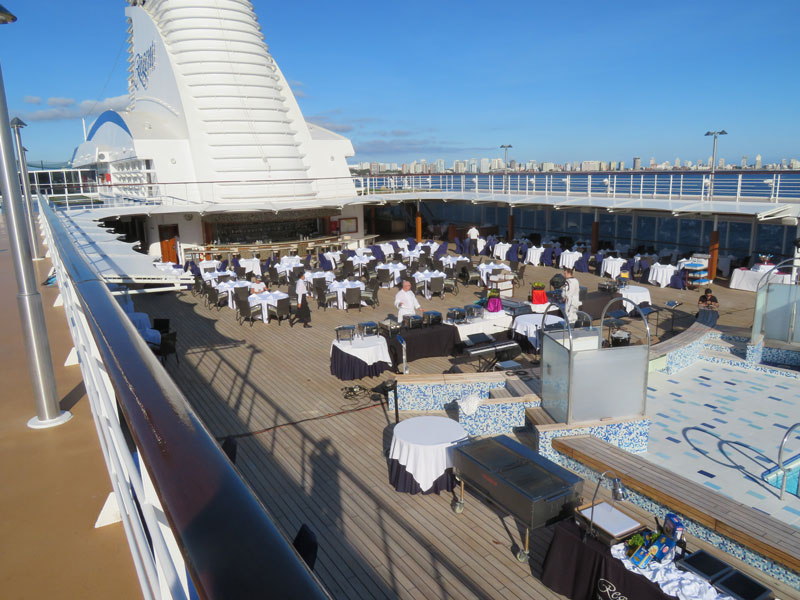
The event is just starting.
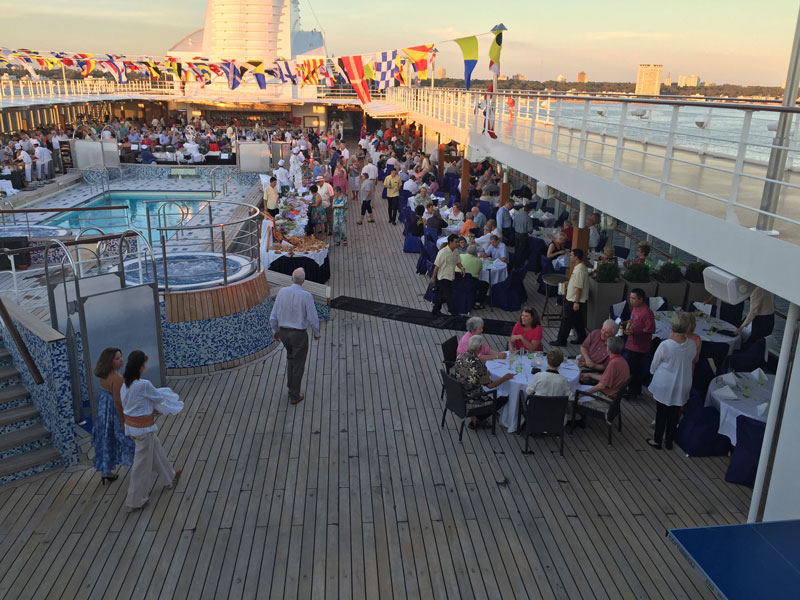
We had another wonderful South American sunset.
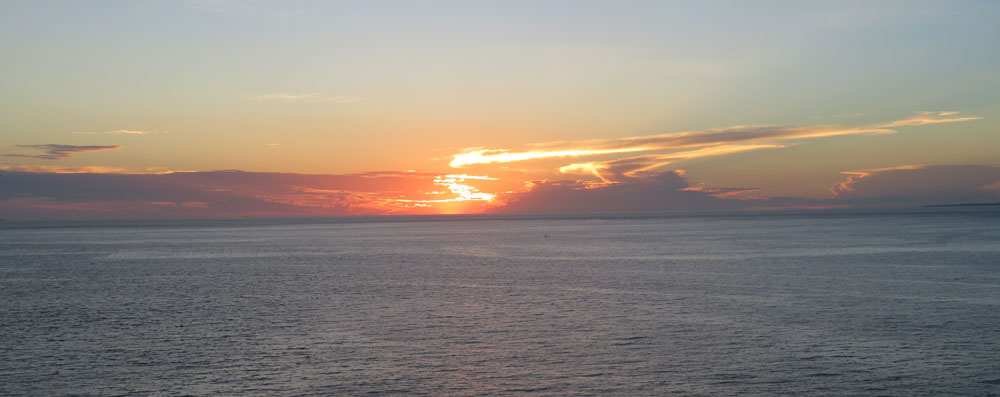
The passengers gave the ship's crew a hand, thanking them for all they had done for us.
